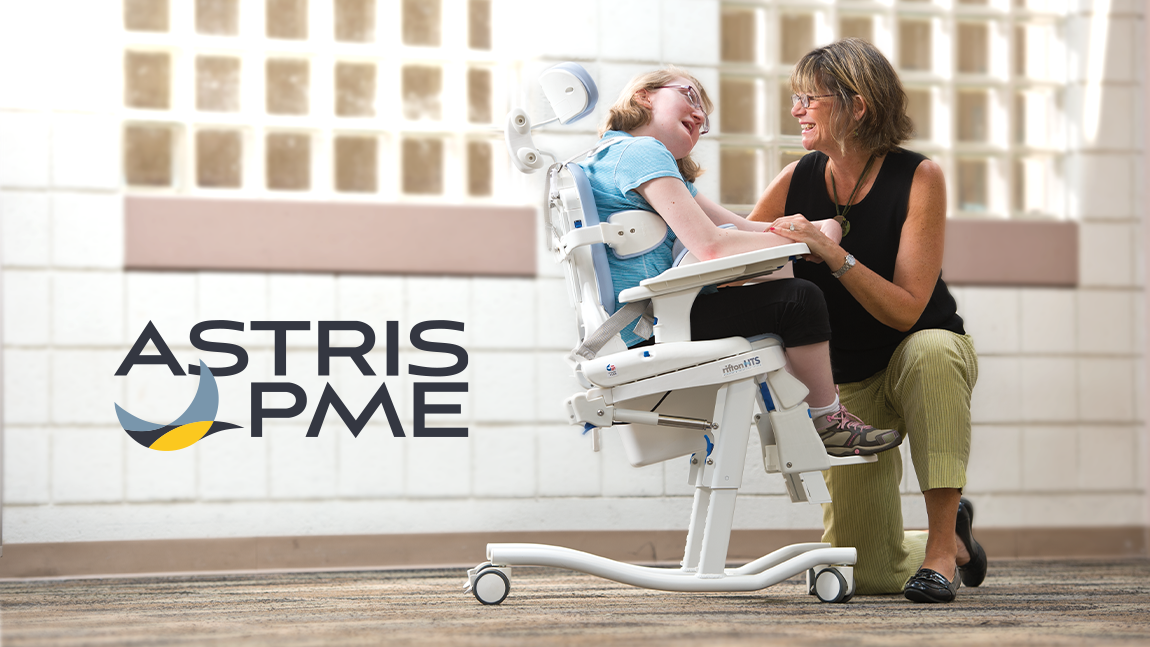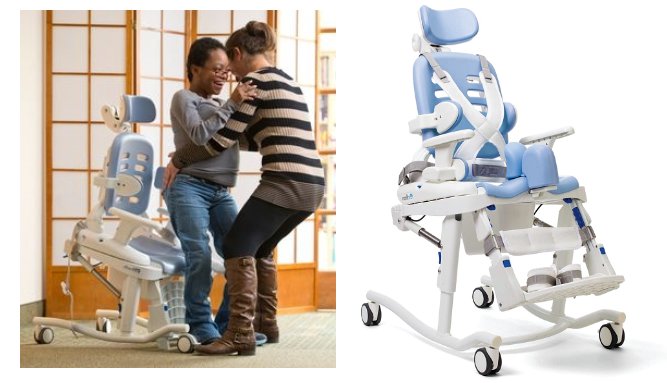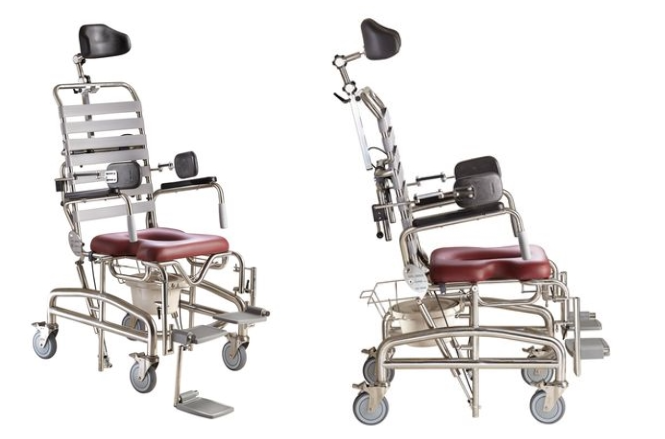Considerations when Selecting Commodes

Managing Complex Seating Needs? What Should I Consider when Selecting Commodes?
The management of complex seating through hygiene assistive technology can be successfully met through the careful consideration of scripting and customisation requirements. It is important that complex positioning choices are carefully considered to ensure they match the requirements of the user, carers, and their environment. These features may be broadly categorised as frame specifications for function, comfort of primary support surfaces and the choice of accessories for stability.
written by
Venesha Moodley
Astris PME Clinical Educator
(B.OT, Postgrad Cert in Clinical Rehab)
What frame specification options can be scripted that contribute to the functional use of the commode?
Customised scripting can include seat cut outs, choice of armrest, foot support type, and positioning supports. The use of cut outs in the seat contributes to the ease of user access for intimate hygiene. Further, the ability to customise seat to floor heights, and available rear/posterior or forward/anterior tilt range assists execution of transfer techniques. Wheel choice is typically influenced by user capacity for self-propelling or available space within the toilet/bathroom.

Hygiene equipment with tilting capabilities provide assistance for the user’s function and postural stability. Anterior/forward tilt is well suited to assist users in stand/pivot transfers. The Rifton Hygiene & Toileting System [HTS] offers this feature which positively reduces the physical demands on carers to manage lifting when they assist with transfers.

The posterior/rear tilt feature of the HTS and Juvo Tilt in Space [TIS] commodes facilitate a supported posture by allowing the trunk to balance over the pelvis while utilising the effect of gravity. This is beneficial for those with less physical capacity and low tone. A safe stable posture can be ensured through the use of hip belts, trunk and head supports in the presence of seizure recovery, involuntary movements and during fluctuating periods of wellness.

Accessories facilitating function include the inclusion of grip handles on commodes. These allow users who can manage postural adjustment to compensate for impaired balance when moving forward or side to side.
Attention to the following contributes to improved sitting stability:
Shortened hamstrings if not accommodated will result in a posteriorly tilted pelvis and forward slumping of the trunk which is more noticeable in users with trunk weakness. Lateral trunk supports reduce the need for users to hold onto external supports to stabilise the trunk. This facilitates the functional use of the upper limbs, to stabilise the upper body.
Opting for a single lateral support or bilateral support can help achieve midline trunk stability. Offsetting the height of lateral supports can help to correct flexible scoliosis. For the dependent user, lateral supports eliminate the need for carers to manage by holding and supporting the user during toileting or showering. The combined effect of lateral trunk support, trunk contact with the backrest, headrest, and activation of rear tilt available on the Juvo commode offers the dependent user an optimally supported seated posture for showering.
The open seat to back angle together with multi strap backrest in the Juvo and RAZ commodes provides improved accommodation of the user’s centre of gravity in the presence of hyper kyphosis.
The custom option of a split seat with offset thigh to trunk angle on each side can be beneficial in managing improved seated stability for some users. Developmental changes may influence asymmetry of the pelvis. The Starfish Pro commode offers on the spot technical adjustments to accommodate these changes. This can include adjustments to accommodate hip abduction or integrity and individual changes to limb length discrepancies. Furthermore, hip stability can be supported by the pre-ischial shelf feature of the Starfish.

Higher level postural instability arising from severe changes in biomechanical presentation, such as significant hip and knee contractures, kyphoscoliosis with rib flare poses greater challenges in managing seated postures in commodes and may benefit from alternate positioning considerations. This typically may involve the use of shower trolleys with alternative waterproof positioning supports. These will assist with head and hip positioning in supine and side lying during showering. The use of night-time positioning components can also be utilised to prevent further loss of available joint movement.
Overall, ensuring a user is comfortable and their complex seating needs are met are important factors when selecting commodes and hygiene AT. Astris PME has been actively engaged in modification and customisation of commodes for children and adults with complex needs for more than two decades.
Our team of product consultants work alongside our inhouse engineers to ensure sustainable, tailored solutions. For further assistance with suitable commode selection and trial of commodes, please contact us on 1300 131 884.

